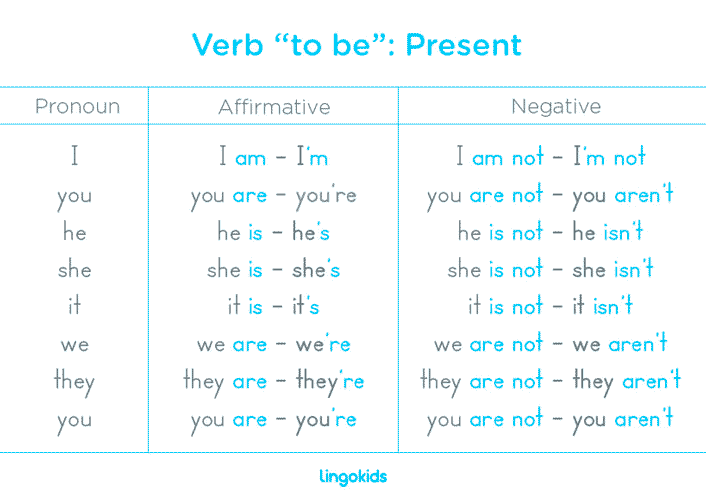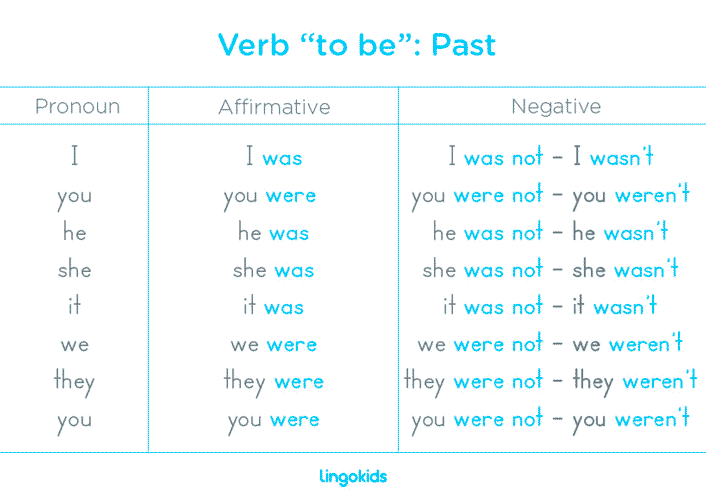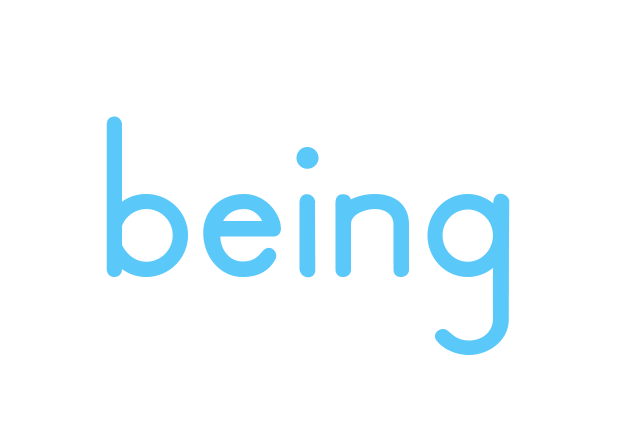Verb To Be
In English, verbs have a very important place in communication, they are the ones responsible for expressing actions. Words like jump, run, speak… all are common and clear examples of verbs that describe an action that a subject does. However, there is one verb that’s the most used in the English language: the verb to be.
For children, learning the verbs -and especially this one- might be a difficult task. Verbs are concepts that some kids might find hard to grasp, but through constant repetition using different activities and exercises, learning about it can be easy, and even fun!
It’s essential for the little ones to learn the uses of the “to be” verb, after all, it’s used frequently and for a lot of different purposes.
How to use the “to be” verb
The “to be” is a verb used to describe something or someone.
In English, it can be used to say different things according to the context. However, the most common use of the to be verb is to talk about names, ages, feeling, nationalities, and professions, especially when talking in the present tense.
The most tricky thing about this verb, however, is that It’s also one of the most irregular verbs in the English language. This means, that unlike regular verbs, which barely change when used when different subjects -or even in different tenses-, and when they do, they follow a pattern, the “to be” verb changes almost completely in most of its forms.
Forms of “to be”
Since the to be verb is highly irregular, it’s written in different ways according to the tense of the verb (whether if it’s present, past, future, or even in mixed tenses), and it also varies according to the subject. Let’s see the forms this verb can take when used next to the subjects.
Base form: Be
This is the most basic form of the verb, and it’s how we can find it in the dictionary. It’s mostly used when using imperatives, and also as the infinitive. Some examples are:
Be nice to your sister! (imperative)
I like to be at my house. (infinitive)
Present
This form of the verb is mainly used in the simple present, and its meaning can change depending on the use in the context. Also, when writing, the present form of the to be verb can be shortened.
Here is the to be for all the subjects in both long and short forms for affirmative sentences, and also for negative sentences with to be.

➕ Affirmative:
I am – I’m
you are – you’re
he/she/it is – he’s/she’s/it’s
we/you/they are – we’re/you’re/they’re
➖ Negative:
I am not – I’m not
you are not – You aren’t
he/she/it isn’t
we/you/they aren’t
Let’s see some examples of this for sentences with the “to be” verb.
For names:
She is Sheila
For ages:
He is 6 years old.
For feelings:
Lauren and Sandra are happy.
For nationalities:
We are from Thailand.
For professions:
You aren’t a painter, you are a singer.
Past: Was / Were
When talking about the past, the to be verb changes its form again. This is how it looks with the different subject pronouns.

I was – I wasn’t
you were – You weren’t
he/she/it was – he wasn’t/she wasn’t/it wasn’t
we/they/you were – we weren’t/they weren’t/you weren’t
Some examples of the past form of the to be are:
I was at the school yesterday
You were 10 years old last year.
Billy and Elliot were students, now they are doctors.
It was raining a while ago.
Past Participle: been
This is the form of the “to be” verb used with the perfect and passive tenses, and it is the same for all the subjects.
It’s also used as an adjective in English sometimes.

She has been busy all day.
Lisa and Billy have been running for an hour.
He has been a teacher for a year now.
Continuous: being
The continuous form of the to be verb is used to make up the continuous tenses. Just as the past participle, it’s the same for all the subjects.

Elliot is being helpful.
Passive form
The “to be” verb, both in its present and past forms, can be used to make passive sentences.
The house was built in the mountains.
The program is being recorded right now.
Questions in English with the “to be” verb
“To be” verb can be used to make questions in English in two different ways. The first one is to use it normally with Wh- questions, like in the following sentences:
What‘s her name?
How old is Baby Bot?
How are they feeling?
Where are you from?
Do you know what my profession is?
What are you doing?
The second option, and also the most important, is to use the “to be” verb to make “yes” or “no” questions in English. This type of questions are very simple, and they can be answered with a yes or no.
Are you reading?
Yes, I am.
Is Lisa ready for bed?
No, she isn’t.
Examples of the “to be” verb:
I am Cowy, and I‘m from Ireland.
Elliot and Cowy are best friends.
Where are Billy and Elliot?
They are at the theater.
Bobby is helping Lisa with his homework.
The river is very pretty.
The flowers aren’t red, they are orange.
Are the dogs running in the field?
Yes, they are.
Printable Worksheets about the Verb “To Be” in English ️



Playlearn with Lingokids!
Want to try learning all of this grammar through games, songs, and interactive activities? Download the Lingokids app and discover the world of playlearning™ – a safe, game-based learning experience that takes kids beyond the classroom.







